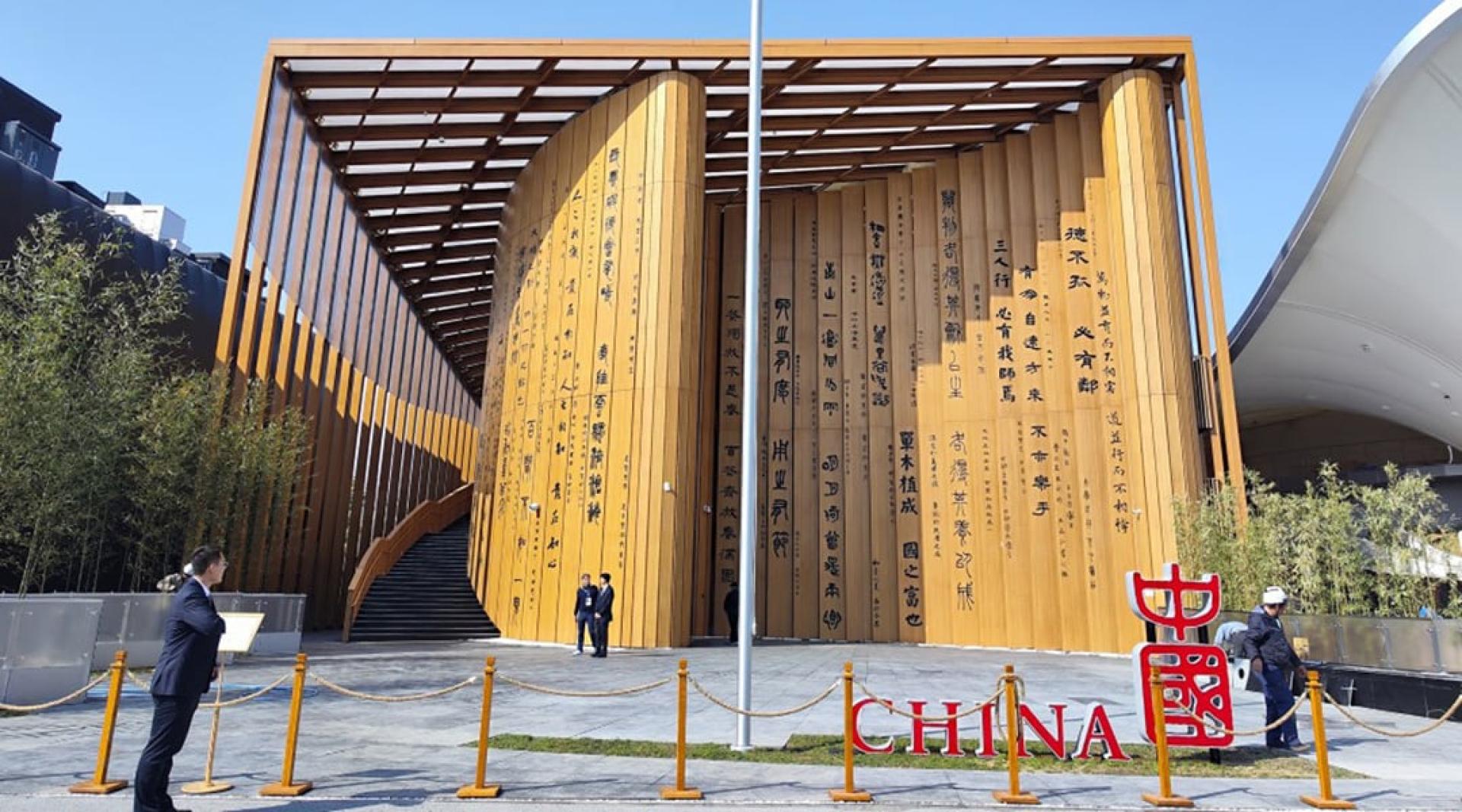The nearly half-year-long Osaka Expo officially closed on Monday with a grand closing ceremony attended by figures including Japanese Prime Minister Shigeru Ishiba. The event featured performances by a professional military band and invited representatives of participating countries and regions to parade with their national flags in a grand procession. On Sunday night, at the Expo’s awards ceremony, the China Pavilion at the Osaka Expo received the Gold Award for Large Self-Built Pavilion Exhibitions. This marks the first time China has won a gold award at an overseas comprehensive expos.
Awards at this Expo were jointly evaluated by nine international experts, categorized into Exhibition, Architecture, and Theme Interpretation, and further divided by pavilion size. Out of 26 large self-built pavilions, China won the Gold Award for Exhibition. The Saudi Arabia Pavilion and the Italy Pavilion received the Gold Awards for Architecture and Theme Interpretation, respectively, among large self-built pavilions.
The half-year-long international exposition faced lackluster crowds at its opening, with daily attendance once dropping below 50,000, raising doubts and controversy about the event’s effectiveness. However, after word of mouth spread and publicity increased, visitor numbers rebounded significantly in the latter half, with daily attendance consistently above 200,000 after September 12.
The organizers released the latest statistics: as of the 11th, total attendance had exceeded 25.07 million visitors, and sales of merchandise featuring the mascot "Maimai" had reached 80 billion yen (2.224 billion ringgit). Profits for this Expo are expected to reach 28 billion yen (778 million ringgit). The profit portion will later be allocated by the government.
Original Site To Be Redeveloped As Large Entertainment Facility
After the closure of the Osaka Kansai Expo, built on the artificial island of Yumeshima, almost all facilities—including the main building "Grand Roof" designed by Japanese architect Sou Fujimoto—will be dismantled, and the land will be returned to the Osaka prefectural and city governments. In the future, a water park and an integrated resort with a casino and other entertainment facilities will be built to continue attracting tourism revenue.
According to Kyodo News, the Expo organizers require all participating countries to begin dismantling their pavilions from the 20th of this month and to return the land by April 13 next year. Other facilities and trees at the venue will then be removed and the site leveled, with the land expected to be returned to local government by the end of February 2028.
Grand Roof Timber To Be Donated to Ishikawa Earthquake Disaster Area
Osaka Expo will only retain the roughly 200-meter-long northeast section of the Grand Roof structure, to be memorialized as part of a municipal park. The rest of the timber from the Grand Roof will be sent to earthquake-affected areas in Ishikawa prefecture for use as building materials for public housing, so the spirit of the Expo will be carried on in a new form. In addition, part of the Osaka Health and Wellness Pavilion will be preserved as a center to promote cutting-edge medical and life sciences.
The most popular, "hard-to-score-a-ticket" Dutch Pavilion will be taken over by Pasona Group, and together with the Pasona Pavilion that showcased a heart model made using induced pluripotent stem cells (iPS cells), will be relocated to Awaji Island in Hyogo Prefecture across from the Expo site.
Besides considering the construction of a stadium, luxury hotels, and commercial facilities on the former Expo site, the Osaka prefectural and city governments will also use adjacent land to build an integrated resort including a casino, scheduled to open in 2030, in hopes of making it an internationally renowned attraction.
